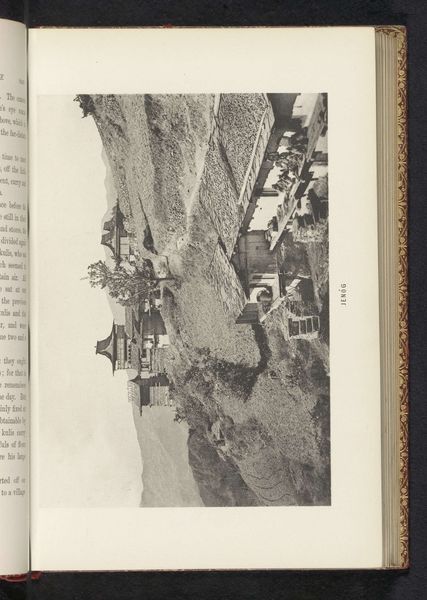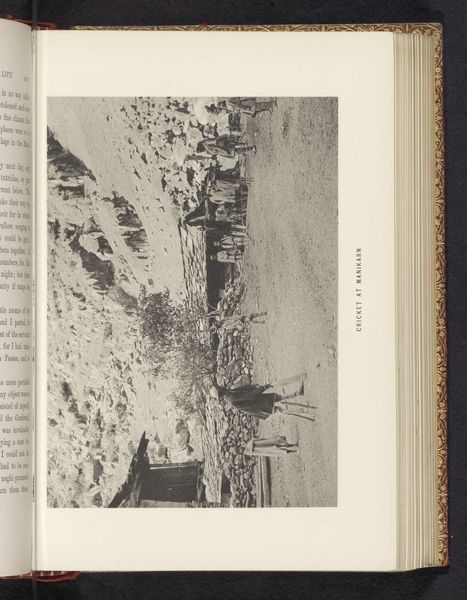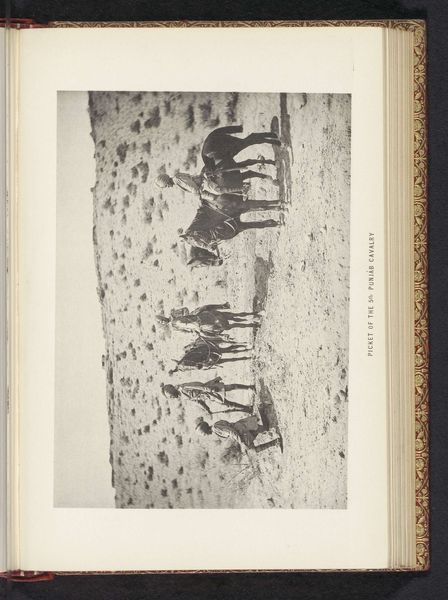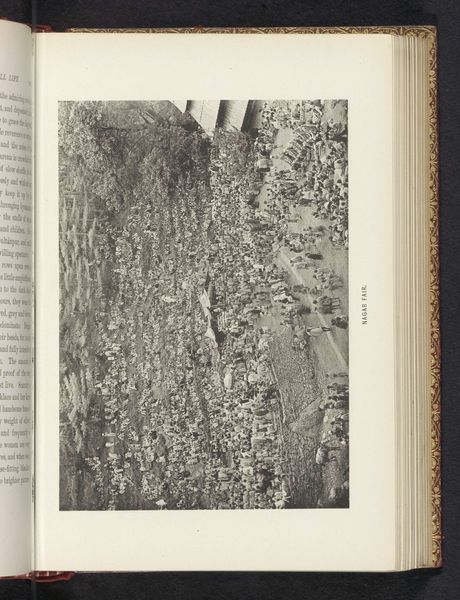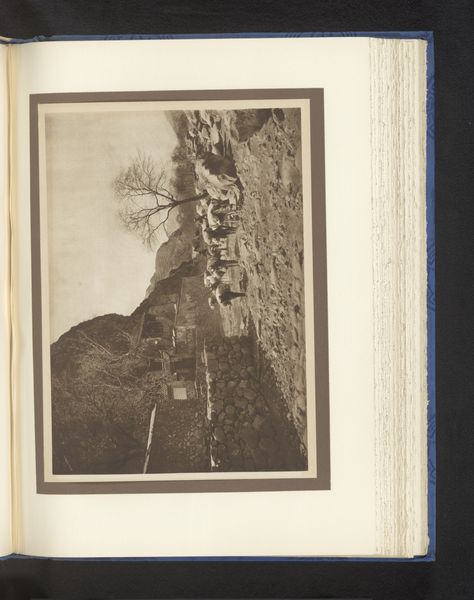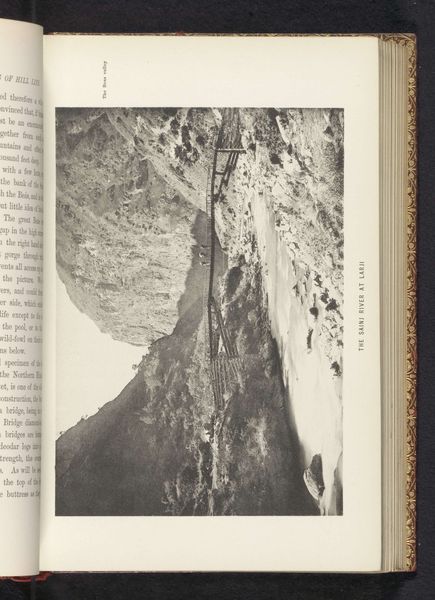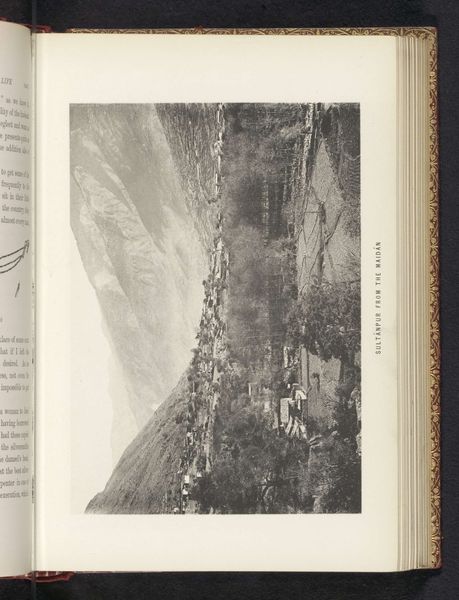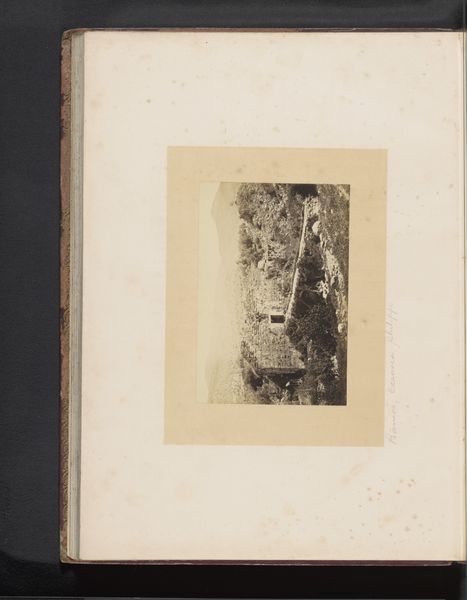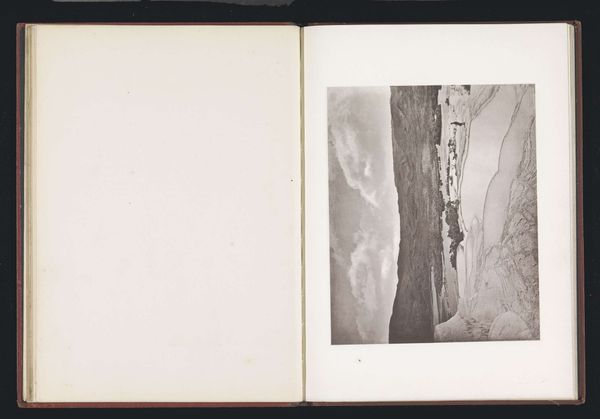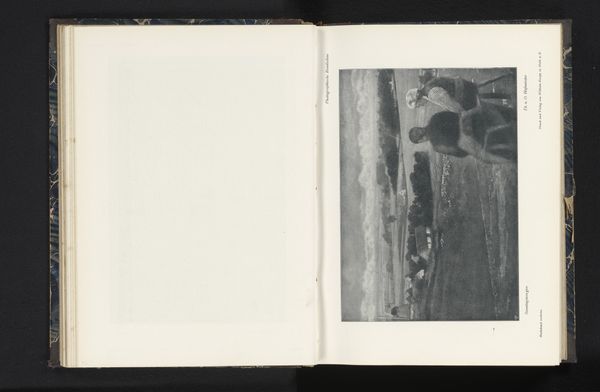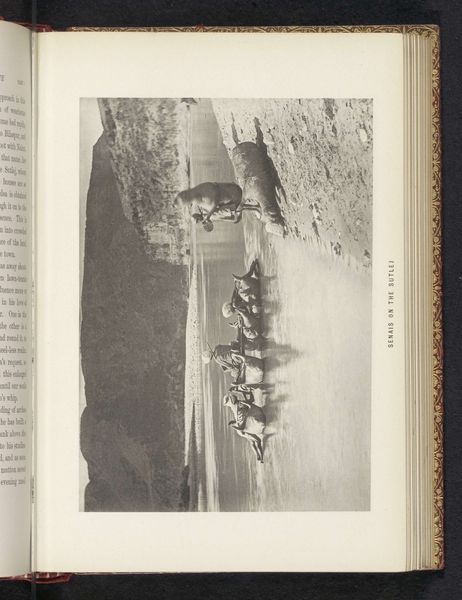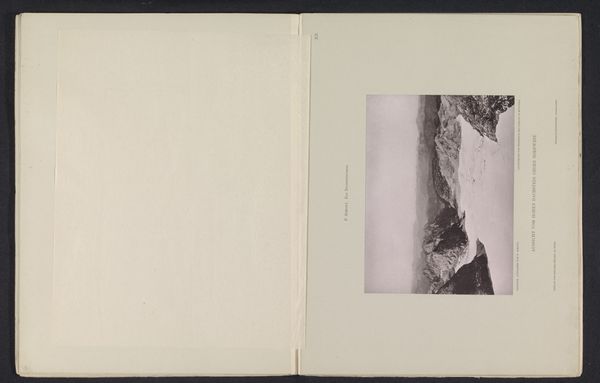
print, photography
# print
#
landscape
#
photography
#
genre-painting
Dimensions: height 119 mm, width 169 mm
Copyright: Rijks Museum: Open Domain
Editor: Frederick Saint John Gore's photographic print, "Early Morning in Camp at the Luri Bridge," made before 1895, depicts what appears to be a military encampment. The print feels almost documentary, but there is an interesting tonal quality. How do you interpret this work in the context of its time? Curator: Considering the materials and their production, we should recognize that photography at this time was not merely about capturing a scene, but involved significant technical labor. The photographer is essentially crafting a commodity to communicate this scene. Note how the landscape and the infrastructure of the camp merge—how does the presence of the camp and its inhabitants affect your perception of this landscape as a constructed space of both labor and leisure? Editor: That's a good point. It is not just a pure landscape, but rather a site shaped by human intervention, specifically military activity. How might we think about the tents themselves? Curator: Exactly. Think of those tents as tools, or temporary shelters, signs of colonial power imposing itself onto a landscape through the very act of manufacturing and installing the camp. The tents, the equipment, the entire endeavor is driven by the flow of materials, human labor, and imperial consumption. Editor: So, it's less about the people depicted and more about the material traces they leave behind and the means of production involved in creating this scene? Curator: Precisely. And how that production naturalizes and commodifies labor. This scene, seemingly mundane, is a product of considerable human and material resources devoted to sustaining colonial endeavors. Look again; how does the photograph as object function as a commodity in circulating these imperial ambitions? Editor: I never considered how the very act of creating this image is intertwined with material consumption and labor exploitation. It gives a new layer of complexity to the "everyday" scene displayed. Curator: And that understanding changes how we value the final print as well. It’s not merely a picture; it’s a physical embodiment of those power dynamics at play.
Comments
No comments
Be the first to comment and join the conversation on the ultimate creative platform.
